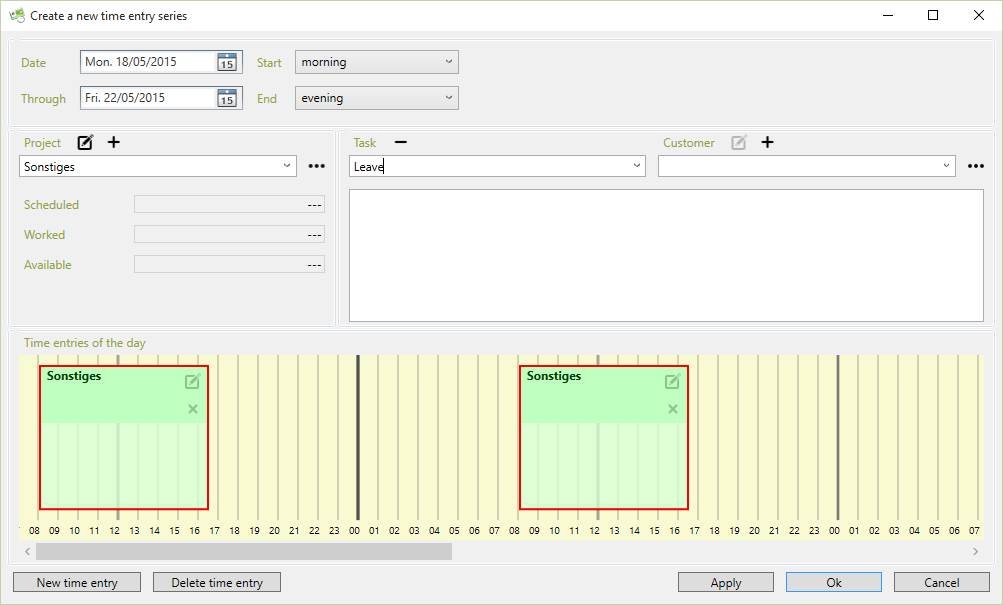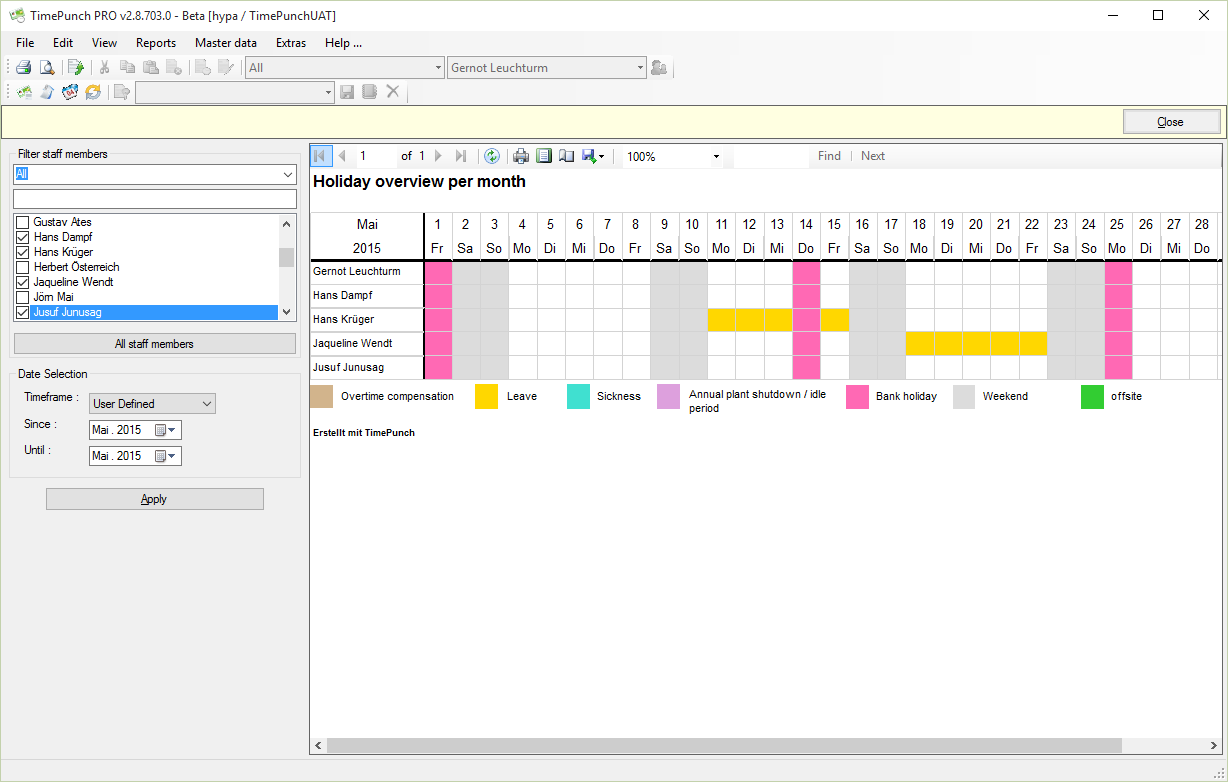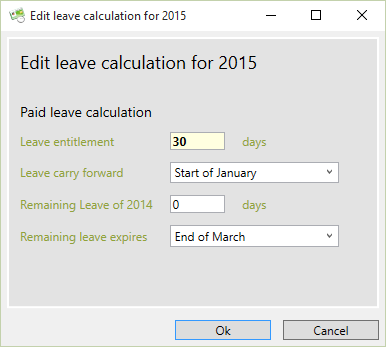Annual leave management
The following pages describes how the annual leave can be managed and evaluated using TimePunch.
Set-up the leave account for the first time
If one creates a new TimePunch profile for a new member, the annual leave (as defined in the contract) must be entered in TimePunch.

Normally, the calculation is based on holiday days. In special cases, if the planned time per day differs greatly from each other, it may be useful to calculate the leave entitlement on an hourly basis.
Starting data
The remaining leave or the proportionate number of vacation days if the employee starts during the year are defined in the initial data.
The same applies to the introduction of TimePunch in the company. The leave days/hours that are still available to the employee when TimePunch is started should then be entered in the specifications.

How to enter annual leave
In order to enter annual leave, choose ‘Edit, Create several days’ duration entries …’ from the menu. Now select the task “Leave” that is a default in the project named “Others”.
The fields ‘start’ and ‘end’ specify the day time where the entry starts and ends. The concrete start and end times will be taken from the working time model.

Holiday planning
TimePunch offers the "Holiday planning" report for the easy planning of annual leave. In this report, each employee can see the registered holiday times and print it out. Overlapping times are directly visible and can be corrected.

Take remaining leave into the upcoming year
The remaining holiday is automatically transferred into the New Year. Therefore the last month before the month, which was designated as vacation carryover in the profile, is crucial.
The current holiday annual leave can be viewed in the register.
By using the button “Extended” the annual leave can be adjusted for the accounting year.

For the current booking year, the month that shall be used to carryover the holiday, can be set. Additionally, the yearly amount of leave can be entered.
If remaining days from the previous year are taken over, it is possible to set an expiration date. The expiration date defines until when the vacation of the previous year must be taken. If the staff does not take the remaining leave until this expiration date, it expires. Then the staff member only owns the annual leave of the current accounting year.